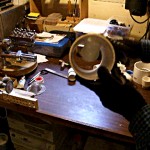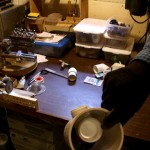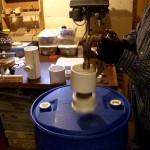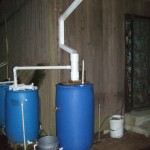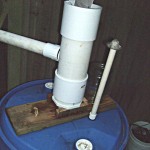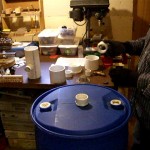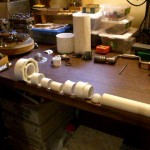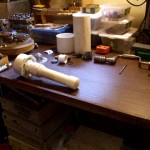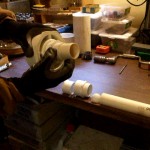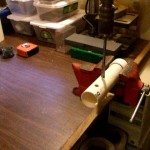Roof water harvesting is a good idea, but how does one store the water? A large container can be quite expensive and may require considerable space; and water is very, very heavy. If the container is to be above ground it must be able to support the weight of the water to be safe. Consider this: a 55 gallon barrel is more than most people can even move when it is full of water (1 gallon weighs about 8.35 pounds 8.35 X 55 = 459.25 pounds). One possible solution is a concrete block cistern built partially under ground. If a person has an area 15 feet by 15 feet and is able to dig down 3 feet, a good sized cistern can be built that will hold thousands of liters ( several thousand gallons ) of water safely. We chose concrete blocks because the cistern location is not accessible to trucks or any kind of large petrol powered equipment. We did not want the forest trashed by putting in a road. We have already been through some of the problems with concrete block cistern construction and this post may help others. Some of the advantages of a concrete block cistern are that it can be built slowly as money and time are available and there is no need for heavy equipment access, or setting up concrete pouring forms. Do not use “pumice” blocks – they may also be called lightweight blocks – they are way too porous.
The concrete block cistern ( mentioned on slowsandfilter.org ) that holds water from filters 2 and 3 has finally been completed and found to be free of leaks. The project started out with the intention of sealing the blocks with Blue Max; but that did not work out. The temperature was too low and there was too much moisture in the ground for the sealer to cure. As it turned out, portland cement was the best choice. It is called “hydraulic” cement – that’s a fancy way of saying that it sets, cures and hardens best with water available – in fact it must have water available. Also temperatures of 50 degrees F and humid conditions are well suited to the curing and and setting of portland cement.
What we had to do was apply 6 coats of portland cement (“portland cement” does not mean it is made in Portland Oregon, or Portland Maine) to the surface of the concrete blocks. One of the coats had 15 percent #70 sand added. The cement is mixed to a consistency of wet mud (like pancake batter) and applied like paint with a large brush. Note, however, if you can apply it with a roller it is too thin and contains too much water. There were lots of inconsistencies in the construction as mortar was occasionally applied in a very unprofessional way. This was partially due to the fact that we made the cistern fit in rather than ripping up tree roots and trashing the forest, so the thing was not built as a “perfect” square.
Cement of this type ( type II portland cement) hardens well under water and the stuff we used is ansi 61 approved. My advice to anyone trying this is to first make sure all of the mortar joints are fully filled on both sides inside and out. Seal both sides of the bricks, fill them with concrete and 1/2 inch rebar. Use at least 6 coats of portland cement and put 2 or 3 extra coats at each joint and around the bottom where the bricks sit on the concrete pad.
If you live in an area where there will be three or four weeks of hot days, absolutely no rain, and low humidity, the Blue Max sealer might be a better choice than portland cement – but caveat emptor do not use the Blue Max sealer without reading the directions and following them exactly. Keep in mind that concrete absorbs moisture from the ground and it will prevent the rubber sealer from curing. My experience has been that if you allow that product to cure as indicated by the manufacturer, it is excellent and I would highly recommend it over portland cement; as it is somewhat flexible and will likely remain effective even if the concrete cracks. However if it does not cure correctly you will have a nightmare of a mess.
After all this, if I had it to do over I would use 4x8x16 solid cap blocks. For a 10X10 foot cistern 5 feet deep the cost for blocks would be about 545 dollars, and you don’t need to fill them with concrete, which will save lots of work and about 500 dollars. Also more mortar can be used between the blocks so that would add strength (and possibly) compensate for the lack of rebar, and mortar is easier to mix than concrete – try it!! ( There is a mixer attachment that fits in an electric drill that will mix up a 60 lb bag of mortar in about 2 minutes easily if you use a 5 gallon bucket and exactly the right amount of water) . The whole project would be less expensive and easier to build if you are not a professional ( applying mortar to an 8x8x16 concrete block is not an easy task even if the mortar is mixed correctly ). The structure would still need to be sealed, but the blocks are not hollow. The only disadvantage I can see is that it would be harder to re-enforce the structure with rebar.





